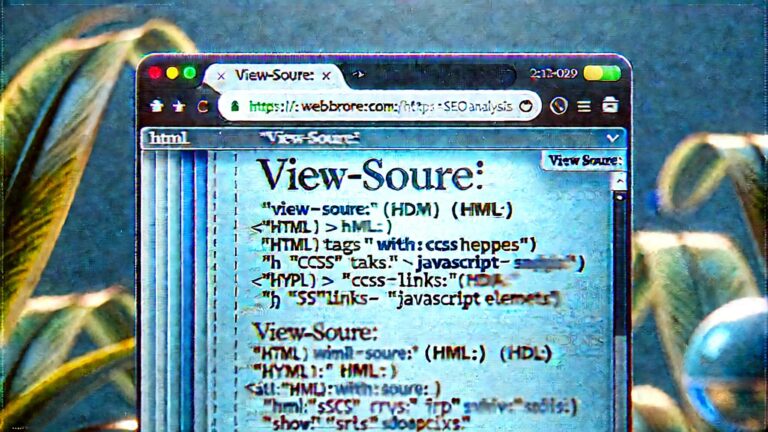Introduction
In the ever-evolving world of web development and digital marketing, understanding the underlying structure of websites is crucial. One tool that offers invaluable insights is the “view-source” command. By appending view-source: before a URL, such as view-source:https://roobx4uuu.blogspot.com, users can access the raw HTML, CSS, and JavaScript that form the backbone of a webpage. This capability is particularly beneficial for developers, SEO professionals, and anyone interested in the mechanics of web design.
What Is “View-Source” and Why Does It Matter?
The “view-source” command allows users to examine the source code of a webpage directly in their browser. This feature is essential for several reasons:
- Educational Tool: Aspiring developers can learn by studying the code structure of existing websites.
- Debugging: Identifying and resolving issues in web pages becomes more accessible.
- SEO Analysis: Understanding how a site is optimized for search engines helps in improving one’s own website’s performance.
By exploring the source code of https://roobx4uuu.blogspot.com, users can gain insights into the site’s design and functionality, which can be applied to their projects.
How to Use the “View-Source” Command
Using the “view-source” command is straightforward:
- Open your web browser.
In the address bar, type view-source: followed by the URL of the site you wish to examine. For example:
view-source:https://roobx4uuu.blogspot.com
- Press Enter, and the browser will display the raw source code of the webpage.
This method works across most modern browsers, including Google Chrome, Mozilla Firefox, and Microsoft Edge.
Key Elements to Examine in the Source Code
When analyzing the source code, focus on the following components:
- Meta Tags: These tags provide metadata about the HTML document, such as descriptions, keywords, and author information. Proper use of meta tags can enhance SEO efforts.
- Header Tags (H1, H2, H3, etc.): These tags define the headings of the content. A well-structured hierarchy of headings improves readability and SEO.
- CSS and JavaScript Links: External stylesheets and scripts are linked within the HTML. Understanding these links can help in modifying the site’s appearance and behavior.
- Canonical Tags: These tags indicate the preferred version of a webpage, which is vital for SEO to prevent duplicate content issues.
Practical Applications of Viewing Source Code
Exploring the source code of https://roobx4uuu.blogspot.com can serve various purposes:
- Learning Web Development: Beginners can study the code to understand how websites are structured.
- Improving SEO: By analyzing how the site utilizes meta tags and header tags, users can apply similar strategies to their own websites.
- Design Inspiration: Observing the layout and design choices can inspire new ideas for web projects.
Conclusion
The “view-source” command is a powerful tool for anyone interested in the intricacies of web development and SEO. By examining the source code of https://roobx4uuu.blogspot.com, users can gain valuable insights that can enhance their understanding and skills in the digital realm. Whether you’re a novice developer or an experienced SEO professional, delving into the source code is an excellent way to learn and grow in the field.

Leave a Reply